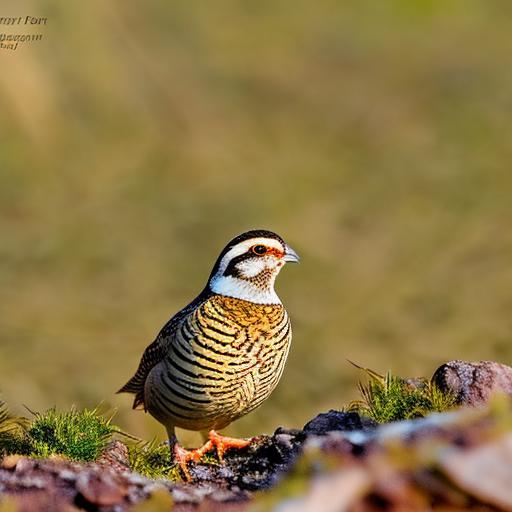Male quails are known for their territorial and aggressive behavior, especially during the breeding season. They are highly competitive and will often engage in fights to establish dominance within a group. Understanding the natural behavior of male quails is crucial when considering keeping them together. It’s important to note that male quails can be quite vocal, especially during the mating season, as they call out to attract females and establish their territory. Additionally, male quails are known to display courtship behavior, such as puffing up their feathers and performing elaborate dances to attract a mate. Understanding these behaviors is essential for creating a suitable environment for male quails to live together harmoniously.
Male quails also have a strong instinct to protect their territory and will aggressively defend it from other males. This territorial behavior can lead to aggression and fighting, especially if the space is limited. It’s important to provide enough space and resources for each male quail to establish their territory without feeling the need to compete with others. Understanding the natural instincts and behaviors of male quails is crucial for successfully keeping them together in a shared environment.
Key Takeaways
- Male quail are territorial and can display aggressive behavior, especially during breeding season.
- Factors to consider before keeping male quail together include the size of the enclosure, the number of birds, and the presence of hiding spots.
- Tips for keeping male quail together include providing plenty of space, offering multiple feeding and watering stations, and providing hiding spots.
- Potential challenges of keeping male quail together include aggression, stress, and potential injuries.
- Creating a suitable environment for male quail involves providing a spacious and well-structured enclosure with hiding spots and places to perch.
- Monitoring and managing male quail interactions is important to ensure the birds are getting along and to intervene if necessary.
- Keeping male quail together can be successful with careful planning and management, but it may not be suitable for everyone.
Factors to Consider Before Keeping Male Quail Together
Before deciding to keep male quail together, there are several factors that need to be carefully considered. Firstly, the size of the enclosure is crucial. Male quails require ample space to establish their territories and minimize aggressive behavior. Overcrowding can lead to increased stress and aggression among male quails, so it’s important to provide enough space for each bird.
Another important factor to consider is the ratio of males to females. Male quails can become aggressive towards each other if there are not enough females present to disperse their attention. It’s recommended to have at least three female quails for every male to help reduce aggression and competition among the males.
Additionally, the age and maturity of the male quails should be taken into account. Younger males may be more prone to aggressive behavior as they establish themselves within the group, while older males may be more dominant and territorial. Understanding the dynamics between the male quails based on their age and maturity is essential for managing their interactions effectively.
Tips for Keeping Male Quail Together
When keeping male quail together, there are several tips that can help minimize aggression and create a harmonious environment. Providing ample space is crucial for reducing territorial disputes among male quails. A larger enclosure with plenty of hiding spots and visual barriers can help minimize confrontations and allow each male to establish their territory without feeling threatened by others.
Introducing females into the group can also help reduce aggression among male quails. Having a higher ratio of females to males can disperse the attention of the males and reduce competition for mates. It’s important to monitor the interactions between the males and females to ensure that there is no excessive aggression or harassment towards the females.
Another tip for keeping male quail together is to provide enrichment and stimulation within the environment. This can include providing natural vegetation, perches, and hiding spots to create a more complex and engaging space for the quails. Enrichment can help reduce boredom and aggression among male quails by providing them with outlets for natural behaviors such as foraging and exploring.
Potential Challenges of Keeping Male Quail Together
While keeping male quail together can be rewarding, there are potential challenges that need to be considered. Aggression and fighting among male quails can be a significant challenge, especially during the breeding season. It’s important to closely monitor the interactions between the males and intervene if any aggressive behavior becomes excessive or harmful.
Another potential challenge is managing the hierarchy within the group. Male quails will often establish a pecking order, with dominant males asserting their authority over subordinate males. This hierarchy can lead to bullying and aggression, especially towards weaker or younger males. It’s important to provide enough space and resources for each male to establish their place within the group without feeling the need to compete excessively.
Additionally, keeping male quail together may require more intensive management and monitoring compared to keeping females or mixed groups. Understanding the social dynamics and behaviors of male quails is crucial for effectively managing their interactions and minimizing potential challenges.
Creating a Suitable Environment for Male Quail
Creating a suitable environment for male quail involves providing ample space, resources, and enrichment to minimize aggression and promote harmonious cohabitation. The enclosure should be spacious enough to allow each male to establish their territory without feeling threatened by others. Providing visual barriers, such as vegetation or structures, can help create separate areas within the enclosure for each male to claim as their own.
In addition to space, it’s important to provide hiding spots and shelters within the environment. This can include natural vegetation, wooden structures, or commercial shelters that provide places for the quails to retreat to if they feel threatened or stressed. Hiding spots can help reduce confrontations and provide a sense of security for the male quails.
Furthermore, providing enrichment within the environment is crucial for promoting natural behaviors and reducing aggression among male quails. This can include providing perches, dust bathing areas, and foraging opportunities to keep the quails engaged and stimulated. Enrichment can help reduce boredom and frustration, which can lead to aggressive behavior in male quails.
Monitoring and Managing Male Quail Interactions

Monitoring and managing male quail interactions is essential for maintaining a harmonious environment. Regular observation of the quails’ behavior can help identify any signs of aggression or stress early on, allowing for intervention before conflicts escalate. It’s important to watch for aggressive displays such as puffing up of feathers, pecking, chasing, or vocalizations that indicate tension among the males.
If aggression does occur, it’s important to intervene promptly to prevent injuries or excessive stress among the quails. This may involve separating aggressive individuals temporarily or providing additional hiding spots and resources to diffuse tension within the group. Understanding the triggers for aggression among male quails, such as limited space or competition for mates, can help in managing their interactions effectively.
Furthermore, providing a balanced diet with enough protein can help reduce aggression among male quails. A diet that meets their nutritional needs can help minimize stress and promote overall well-being, reducing the likelihood of aggressive behavior within the group.
Is Keeping Male Quail Together Right for You?
Keeping male quail together can be a rewarding experience, but it requires careful consideration of their natural behaviors and social dynamics. Providing enough space, resources, and enrichment is crucial for minimizing aggression and promoting harmonious cohabitation among male quails. Understanding the potential challenges and implementing management strategies can help create a suitable environment for male quail to live together peacefully.
Before deciding to keep male quail together, it’s important to assess your ability to provide a suitable environment and manage their interactions effectively. If you are prepared to invest in creating a spacious and enriched environment for your male quail, as well as monitor and manage their interactions closely, then keeping them together may be right for you. However, if you are unable to meet their social and environmental needs adequately, it may be best to consider keeping female or mixed groups of quail instead.
Ultimately, keeping male quail together requires a commitment to understanding their behavior and providing a suitable environment that allows them to express their natural instincts without excessive competition or aggression. With careful consideration and management, male quail can live together harmoniously in a shared environment.
If you’re considering keeping male quail together, it’s important to understand their social dynamics and space requirements. To learn more about the intricacies of keeping male quail together, check out this insightful article on PoultryWizard. Understanding the behavior and needs of male quail can help ensure a harmonious living environment for these fascinating birds.
FAQs
Can you keep male quail together?
Yes, you can keep male quail together in the same enclosure as long as there is enough space and resources for all the birds.
Do male quail fight with each other?
Male quail can be territorial and may engage in fighting, especially during breeding season. It is important to provide enough space and hiding spots to minimize aggression.
What is the recommended ratio of male quail to females?
A ratio of 1 male to 3-4 females is recommended to reduce aggression and ensure successful breeding.
What are some signs of aggression in male quail?
Signs of aggression in male quail may include pecking, chasing, and vocalizing. It is important to monitor the birds closely and separate them if necessary.
Are there any specific breeds of male quail that are more aggressive?
Some breeds of quail may be more aggressive than others, but individual temperament can also play a role. It is important to observe the behavior of the birds and make adjustments as needed.
Meet Walter, the feathered-friend fanatic of Florida! Nestled in the sunshine state, Walter struts through life with his feathered companions, clucking his way to happiness. With a coop that’s fancier than a five-star hotel, he’s the Don Juan of the chicken world. When he’s not teaching his hens to do the cha-cha, you’ll find him in a heated debate with his prized rooster, Sir Clucks-a-Lot. Walter’s poultry passion is no yolk; he’s the sunny-side-up guy you never knew you needed in your flock of friends!







